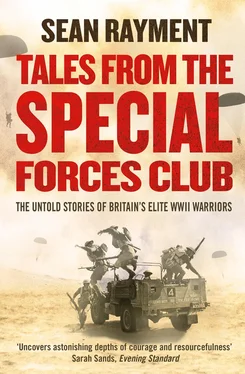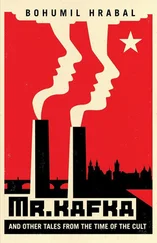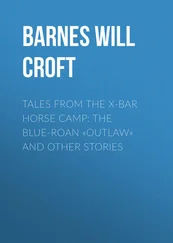* * *
Despite being accepted by the LRDG, Jimmy was only ‘attached’ to the unit; he would become a permanent member within a few months only if he proved his worth. In those early days the LRDG was composed of two squadrons, A and B. A Squadron consisted of four New Zealand patrols, while B Squadron was composed of two Yeomanry and two Rhodesian patrols, and two patrols from the British Brigade of Guards.
The composition of the patrols varied slightly according to the commander, but essentially they consisted of a variety of 15cwt and 30cwt Chevrolet trucks and, later on in the campaign, US jeeps. All the trucks were unarmoured and stripped down to their bare essentials. Having no doors or windshields, the vehicles offered little protection to the crews if they were attacked, but they were fast and manoeuvrable. The strength of the patrols also varied but was somewhere between 15 and 20 men. The vehicles were repaired, modified and improved after each mission. Every patrol had to be self-sustaining and contained a medic, navigator, mechanic, signaller and cook.
The Siwa Oasis base was close to the Libyan-Egyptian border and a world away from the regular Army. It was a long journey through the dust and the heat of the North African desert, but Jimmy and Bill were not bothered by the discomfort, and a week after leaving Al Maza the convoy arrived at the base.
Siwa was unlike any military establishment either Jimmy or Bill had previously experienced. The oasis was composed of a small village with a number of dwellings and an Arab hotel, used by some of the French forces who were also camped at the oasis.
Most of the LRDG troops chose to make their camp beneath the shade of a collection of lush date palms growing close to the numerous ponds which provided the Arab population and the military units with vital supplies of clean, fresh water. The oasis was also the perfect location for a forward operating base. It was in Egypt, 150 miles south of the coast, which was the main fighting area, and therefore relatively safe. But its presence was not secret, and the Italian forces certainly knew of its existence. Italian reconnaissance flights would fly over the oasis every week, and there was the occasional bombing run, but despite the threat the soldiers felt quite safe.
Discipline was different from the regular Army. Members of the LRDG were expected to be professional at all times; those who weren’t were sent back to their original units. It was, Jimmy thought at the time, like a breath of fresh air. There was hardly any saluting, no drill, no inspections. All patrol commanders were called ‘Skipper’, while all other ranks were on first-name terms.
The two new arrivals quickly settled into the relaxed atmosphere of desert life, and it hardly seemed that a violent war was raging across North Africa and much of Europe. In fact, life was so idyllic at Siwa that the troops called it ‘Hollywood’. Within the privations of desert warfare, the LRDG at Siwa wanted for nothing – there was always a plentiful supply of fresh water, and rations were brought in by the unit’s Heavy Section on regular administration runs.
‘Life in Siwa was very comfortable and we were a tight-knit, self-contained unit,’ Jimmy recalled. ‘Everyone was very professional and got on with what they had to do. There was no shouting and no punishments – the only punishment was to be sent back to your unit, and no one wanted that. We even had a little pond where we could go for a swim and keep cool and wash.
‘We wore whatever we liked and, more often than not, it was a mishmash of uniforms. We soon learnt what was practical for the conditions and what wasn’t, and that’s how we operated.
‘We had army rations we cooked ourselves and we had a rum ration every night – some people didn’t have it so there was a little bit more for others. We received the rum in bulk but it was rationed out. There was one character, an ex-tank soldier in his 40s, who was older than the rest of us and he used to take damn near a mug full every night and would go to bed stupid. The only real threat was from aircraft, which would come over most days either to take pictures or sometimes drop a bomb from a height well out of range. Life was also made a little bit more comfortable because the LRDG was issued 50 per cent more rations than other units because we worked in small patrol groups.
‘The Sahara is a vast area; you can fit the entire sub-continent of India into it, and we had behind us all the experience Ralph Bagnold had gained from his various expeditions into the desert in the late 1920s and 30s.
‘Bagnold developed the sun compass, which was a beautifully accurate instrument and it would give navigators a precise fix of the patrol’s location providing they knew what they were doing. Behind enemy lines you could keep way away from the fighting line, which was around the coast, but the danger was always aircraft. There were occasions when the LRDG were attacked by friendly aircraft and men were killed because the aircraft couldn’t distinguish between friendly forces and the enemy. You can’t fire effectively at an aircraft if you are on the move in vehicles, but if you are stationary then you become an easy target, so it’s one or the other and you would choose what to do depending on the terrain.’
Speed in the desert depended on terrain and the vehicles being used. In areas where the terrain was particularly difficult the speed could fall to just 10mph, usually in rocky and hilly areas. But there were other areas, such as the Kalansho Seria, which were almost perfectly smooth, allowing convoys to travel at speeds of 60mph.
‘Normally the terrain would be hilly and strewn with rocks, and it was often impassable, making navigation difficult. Then there was the sand sea, comprised of vast sand dunes. We tried to avoid the dunes, but sometimes you couldn’t. The dunes were shaped by the wind; on the windward side the slope would be quite gradual and you could sail up them very easily, and then suddenly they would end in what amounted to a precipice. The gradual slope would stop and you would be confronted by an almost vertical drop the other side, which you couldn’t see if the sun was shining in your eyes. There were one or two nasty accidents.’
Jimmy’s first mission took place a few weeks after arriving at Siwa. The target was an Italian occupied fort called El Gtafia, about 25 miles south of Agedabia in an area 200 miles behind enemy lines. But as Jimmy was soon to learn, being located behind enemy lines was often much safer than being in front of them. It was the autumn of 1941 and, after the spectacular earlier success of the German Afrika Korps and their inspirational commander Erwin Rommel, the tide of the desert war was turning in favour of the Allied forces.
General Claude Auchinleck had replaced General Wavell as Commander-in-Chief Middle East theatre, and reinforcements in the form of a new Corps had arrived, which allowed the creation of the soon-to-be 8th Army.
‘We didn’t do a great deal of training prior to the first operation, because we were perfectly confident and trained in what we had to do. It was also quite an easy function to take the gun, a 25-pounder, out into the blue †and fire it. The gun was always ready for action. We made ourselves familiar with all of the equipment. There was a Number 11 wireless set and field telephones, and we just made sure that we had all the equipment we needed to do whatever was asked of us.’
Prior to departing, the vehicles were loaded with water, rations, food, radios, spare parts and ammunition. To cope with the loads, the trucks were fitted with reinforced springs, spares of which were also carried.
The convoy took around three days to reach its target. Progress was slow because of the 10-ton Mack truck which was needed to carry the 25lb artillery piece. When the patrol arrived at the target location, Jimmy and Paul Eitzen moved up to the top of a hill to get a better view of the fort, while at the same time laying a telephone cable back to the gun, so that the two observers could relay information back to the gun team.
Читать дальше












